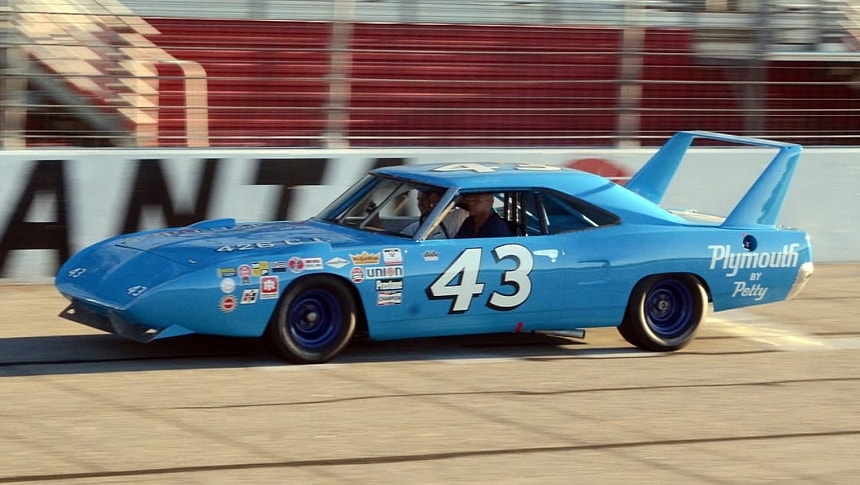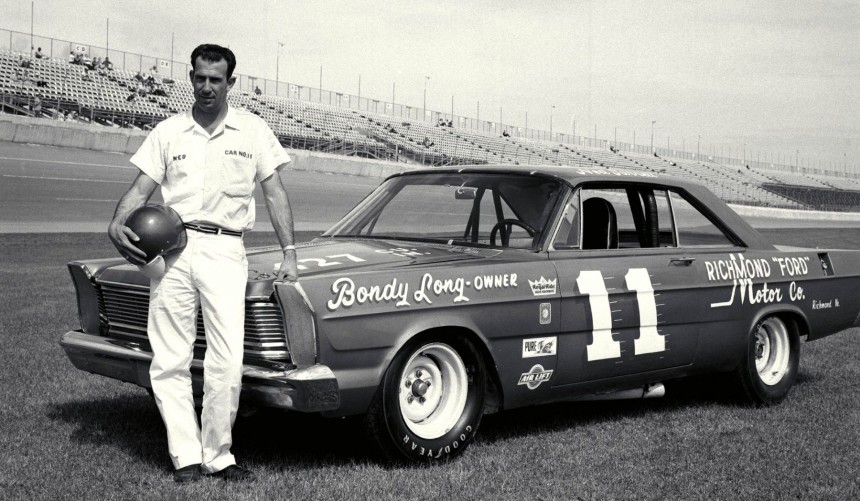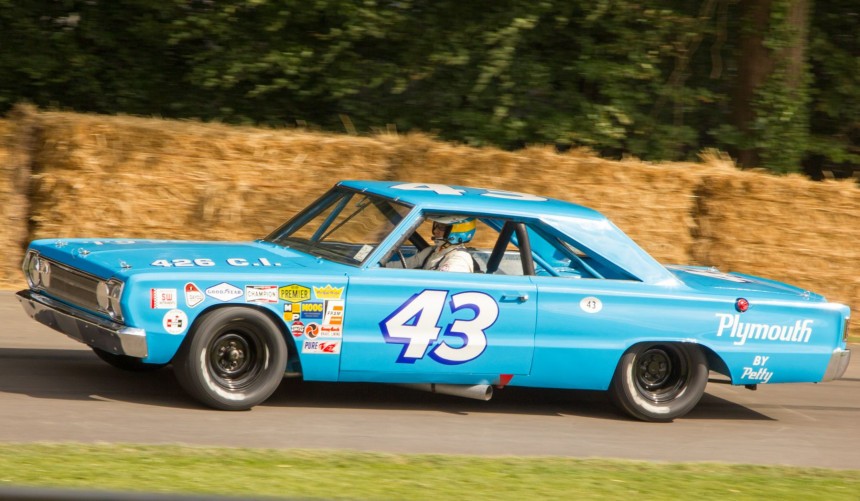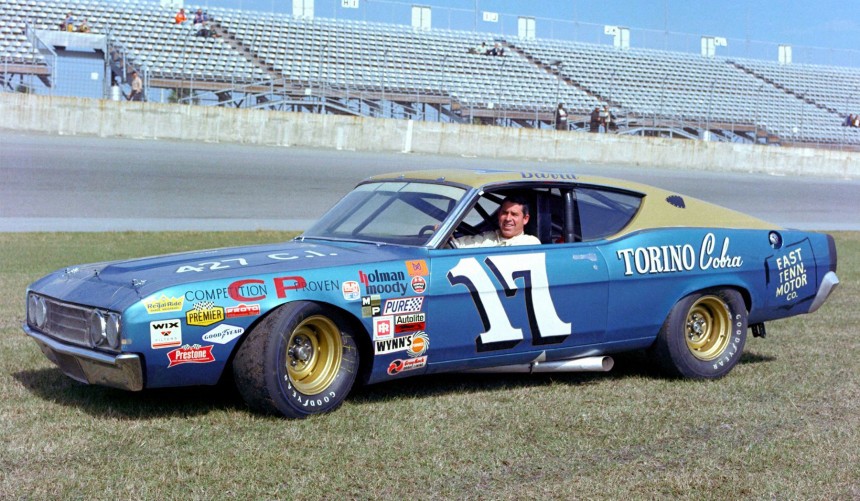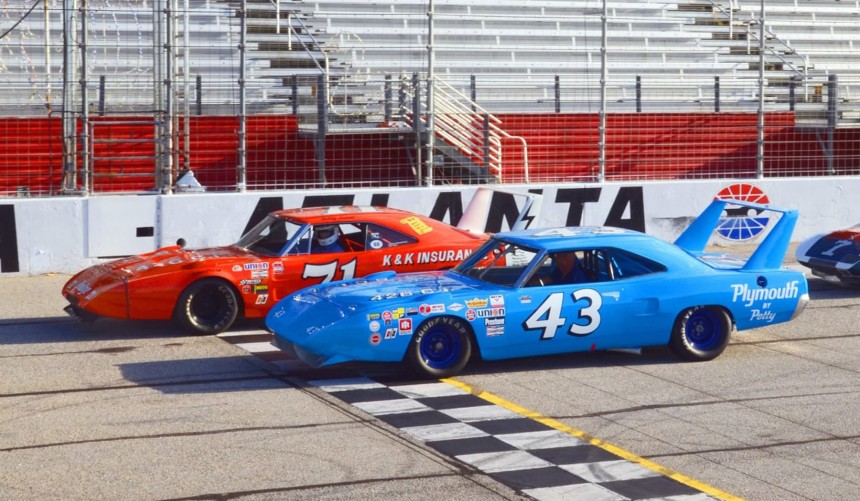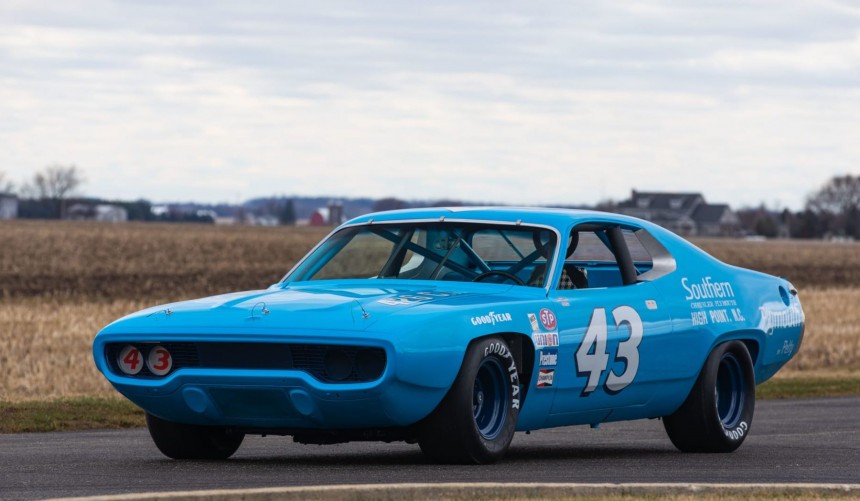For most of its history, NASCAR's top racing series featured race cars that were heavily based on factory models, and for around a decade, those cars were none other than muscle cars.
Though several so-called proto-muscle cars were introduced in the past, intermediate coupes with potent engines - often sourced from bigger, full-size models - began emerging during the mid-1960s.
In less than a decade, these supercars (subsequently called muscle cars) quickly became arguably the most popular road-going vehicles ever built in the US.
Nevertheless, their origins and one of the main reasons for their continuous development was the world of motorsport, mainly NASCAR's widely popular Grand National series.
During the first part of the 1960s, some American manufacturers were still entering full-size cars in NASCAR's top Grand National series -albeit the emerging trend of transplanting full-size-bound V8s into the engine bays of intermediates made it clear that their future was sealed.
Before intermediates completely took over, the 1965 title was won, for the last time, by a full-size car.
That car was the Ford Galaxie 500 XL, a Holman-Moody-prepped behemoth packing a tweaked chassis, suspension, and braking systems, as well as the Blue Oval's legendary 427-ci (7.0-liter) V8 rated at 425 hp but capable of over 500.
Ford had several factory-backed Galaxies compete in the 1965 Grand National series, but the one that stood out was the no. 11 car driven by Ned Jarrett.
The talented driver earned a top-five finish in 42 of the 54 races he competed in, including 13 wins, which earned him his second Grand National Title.
The last successful full-size model of its era, the Galaxie 500 XL, returned for the 1966 and 1967 seasons (without official factory support), but after failing to keep up with Chrysler's intermediates, it was replaced by the Fairlaine-based Torino in 1968.
The 1966 season marked the return of the previously outlawed 426 HEMI, as Chrysler finally managed to homologate the Elephant engine by making it available to the public in its production models.
The mighty V8 was fitted inside the engine bay of the Belvedere, Plymouth's mildly restyled intermediate offering.
Since Ford had withdrawn its factory support in response to NASCAR's decision to allow HEMI-powered Mopars to compete, the latter had no real competition.
Of the factory cars entered in the Grand National series during that year, the light blue no. 43 Belvedere, driven by the legendary Richard Petty, finished the season third, while Mopar's David Pearson in his Dodges won the title. However, Richard Petty and the 1966 Belvedere returned for the 1967 season and made history.
During that season, the King and his no. 43 Belvedere won an incredible 27 out of 48 races, and, even more impressive, ten of those wins came consecutively - a record that still stands today.
For the 1968 season, Ford was determined to end Chrysler's reign of dominance by introducing a new NASCAR challenger: the Torino.
An all-new intermediate based on the Fairlane, the Torino featured a SportsRoof (aka fastback) roofline, which made it more aerodynamically efficient than the old, boxy Galaxie.
Prepped by Holman-Moody, the Torinos received the venerable 427 side oiler, which, coupled with the aerodynamic body, made them hard to beat.
The 1968 season ended with Ford winning 27 out of the 49 races, while the title went to David Pearson, who now drove a Torino.
The Torino returned in 1969 but now donned a completely redesigned front end homologated on the mass-produced Torino Talladega.
Even more aerodynamically superior, the revamped Torino started the season with 427 side-oiler power but soon received the new Boss 428 engine, which made it even faster.
The car was responsible for 26 victories and another Grand National Title for David Pearson. Its superiority also convinced Richard Petty to join Ford that year, but the King only managed to win 10 races, finishing the season in second place.
In response to Ford's initial Fairlane-based Torino and the subsequent Talladega, Chrysler developed its own aero warrior for the 1969 season.
Based on the standard Dodge Charger but fitted with a number of aero improvements, including a pointy nose and a humongous rear wing, the Charger Daytona became by far the most exotic-looking race car that ever competed in NASCAR until then.
Homologated thanks to Dodge's efforts to sell the required number of street-legal production models, the Daytona didn't manage to stop Ford during the 1969 season, but it left its mark by becoming the first car in NASCAR history to break the 200 mph (322 kph).
For the next season, the lessons learned during the development of the Daytona were applied to Mopar's second winged-warrior, the Road Runner-based Plymouth Superbird.
While the Superbird pried Richard Petty back in the Plymouth fold, the Daytona proved more successful, as Bobby Isaac clinched the title.
Even today, the Charger Daytona and Superbird Aero Twins remain some of the most badass race cars that ever competed in NASCAR.
For sponsorship reasons, the NASCAR Grand National Series became the Winston Cup Series in 1971.
Apart from that, the aero cars that dominated the previous three seasons were banned, so manufacturers had to switch back to conventional-bodied vehicles.
For Plymouth, that meant replacing the Road Runner-based Superbird with the redesigned, second-generation Road Runner that featured a fuselage-inspired body and a more prominent, fastback-style roof line.
Under the hood, the car hid the now-mythical 426 HEMI, which would be discontinued after the season ended.
Though no longer fitted with a massive wing, the light-blue Plymouth helped Petty win 21 of the 46 races he competed in. Therefore, the King lifted his third NASCAR trophy after a frustrating four-year pause.
In less than a decade, these supercars (subsequently called muscle cars) quickly became arguably the most popular road-going vehicles ever built in the US.
Nevertheless, their origins and one of the main reasons for their continuous development was the world of motorsport, mainly NASCAR's widely popular Grand National series.
1965 Ford Galaxie 500 XL
Before intermediates completely took over, the 1965 title was won, for the last time, by a full-size car.
That car was the Ford Galaxie 500 XL, a Holman-Moody-prepped behemoth packing a tweaked chassis, suspension, and braking systems, as well as the Blue Oval's legendary 427-ci (7.0-liter) V8 rated at 425 hp but capable of over 500.
Ford had several factory-backed Galaxies compete in the 1965 Grand National series, but the one that stood out was the no. 11 car driven by Ned Jarrett.
The talented driver earned a top-five finish in 42 of the 54 races he competed in, including 13 wins, which earned him his second Grand National Title.
The last successful full-size model of its era, the Galaxie 500 XL, returned for the 1966 and 1967 seasons (without official factory support), but after failing to keep up with Chrysler's intermediates, it was replaced by the Fairlaine-based Torino in 1968.
1966-67 Plymouth Belvedere
The mighty V8 was fitted inside the engine bay of the Belvedere, Plymouth's mildly restyled intermediate offering.
Since Ford had withdrawn its factory support in response to NASCAR's decision to allow HEMI-powered Mopars to compete, the latter had no real competition.
Of the factory cars entered in the Grand National series during that year, the light blue no. 43 Belvedere, driven by the legendary Richard Petty, finished the season third, while Mopar's David Pearson in his Dodges won the title. However, Richard Petty and the 1966 Belvedere returned for the 1967 season and made history.
During that season, the King and his no. 43 Belvedere won an incredible 27 out of 48 races, and, even more impressive, ten of those wins came consecutively - a record that still stands today.
1968-1969 Ford Torino
An all-new intermediate based on the Fairlane, the Torino featured a SportsRoof (aka fastback) roofline, which made it more aerodynamically efficient than the old, boxy Galaxie.
Prepped by Holman-Moody, the Torinos received the venerable 427 side oiler, which, coupled with the aerodynamic body, made them hard to beat.
The 1968 season ended with Ford winning 27 out of the 49 races, while the title went to David Pearson, who now drove a Torino.
The Torino returned in 1969 but now donned a completely redesigned front end homologated on the mass-produced Torino Talladega.
Even more aerodynamically superior, the revamped Torino started the season with 427 side-oiler power but soon received the new Boss 428 engine, which made it even faster.
The car was responsible for 26 victories and another Grand National Title for David Pearson. Its superiority also convinced Richard Petty to join Ford that year, but the King only managed to win 10 races, finishing the season in second place.
1969 Dodge Charger Daytona and 1970 Plymouth Superbird
Based on the standard Dodge Charger but fitted with a number of aero improvements, including a pointy nose and a humongous rear wing, the Charger Daytona became by far the most exotic-looking race car that ever competed in NASCAR until then.
Homologated thanks to Dodge's efforts to sell the required number of street-legal production models, the Daytona didn't manage to stop Ford during the 1969 season, but it left its mark by becoming the first car in NASCAR history to break the 200 mph (322 kph).
For the next season, the lessons learned during the development of the Daytona were applied to Mopar's second winged-warrior, the Road Runner-based Plymouth Superbird.
While the Superbird pried Richard Petty back in the Plymouth fold, the Daytona proved more successful, as Bobby Isaac clinched the title.
Even today, the Charger Daytona and Superbird Aero Twins remain some of the most badass race cars that ever competed in NASCAR.
1971 Plymouth Road Runner
Apart from that, the aero cars that dominated the previous three seasons were banned, so manufacturers had to switch back to conventional-bodied vehicles.
For Plymouth, that meant replacing the Road Runner-based Superbird with the redesigned, second-generation Road Runner that featured a fuselage-inspired body and a more prominent, fastback-style roof line.
Under the hood, the car hid the now-mythical 426 HEMI, which would be discontinued after the season ended.
Though no longer fitted with a massive wing, the light-blue Plymouth helped Petty win 21 of the 46 races he competed in. Therefore, the King lifted his third NASCAR trophy after a frustrating four-year pause.
